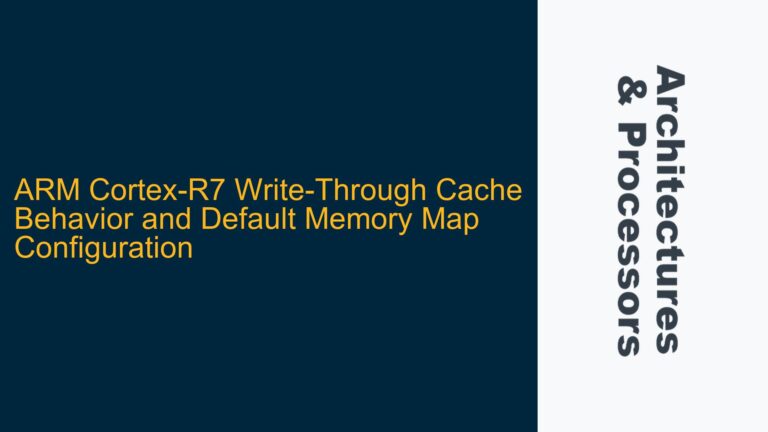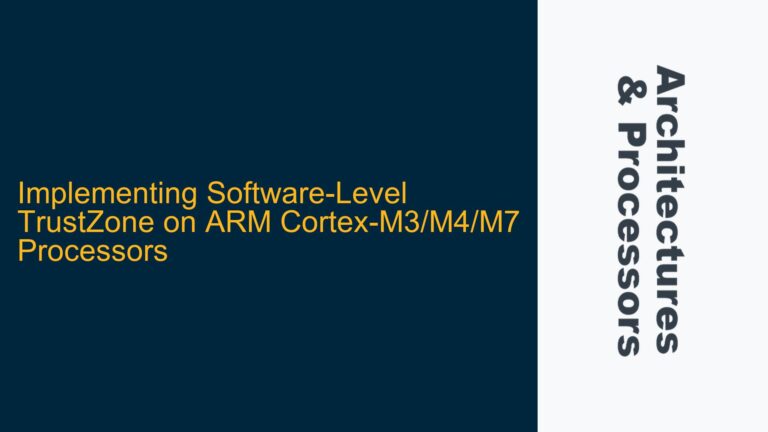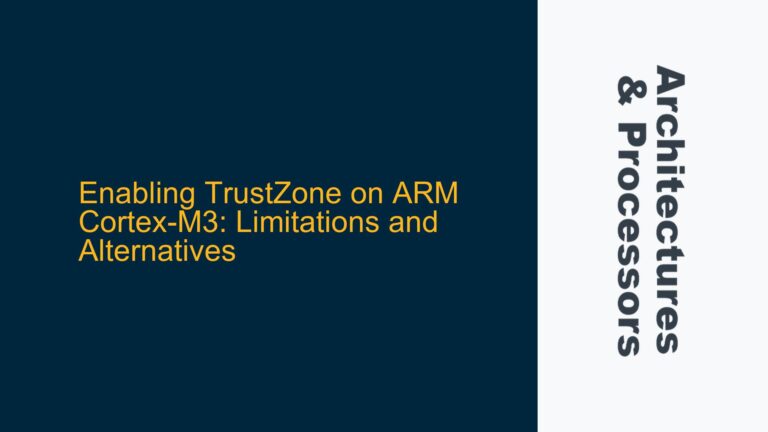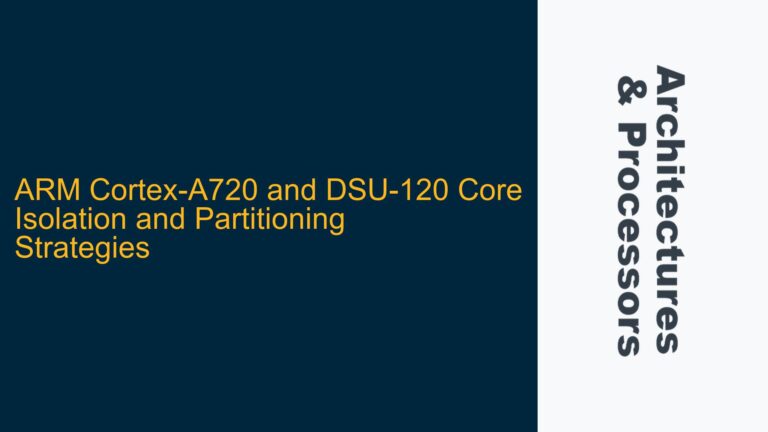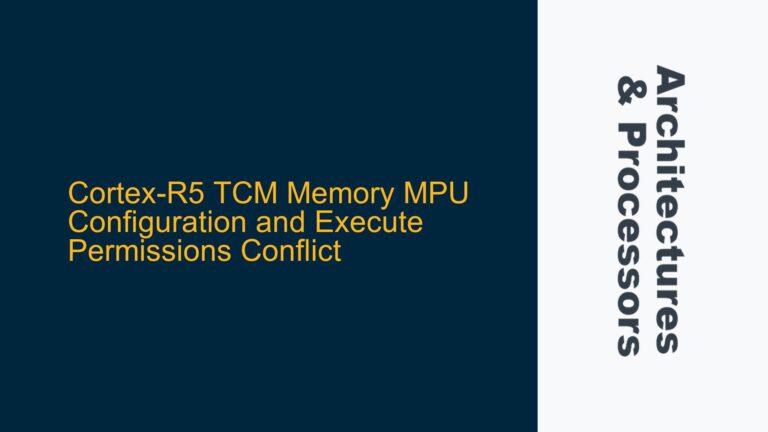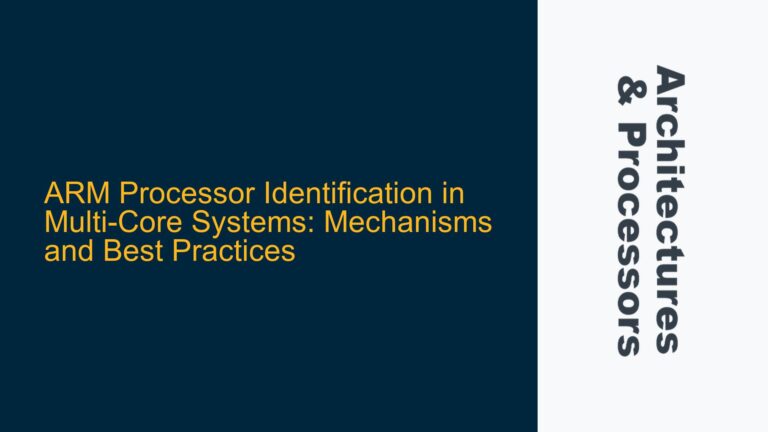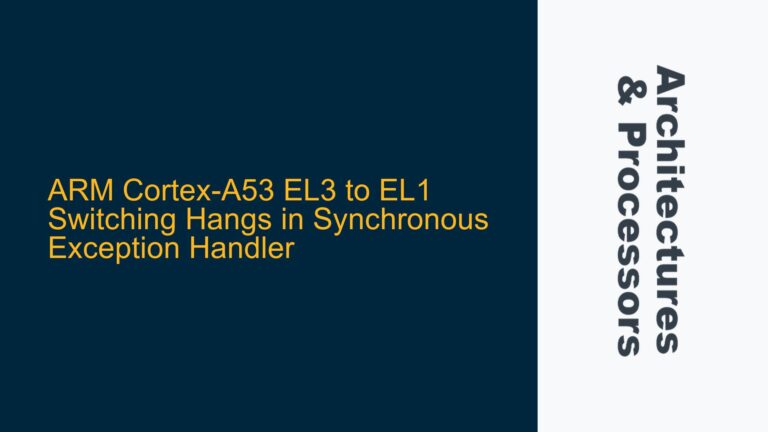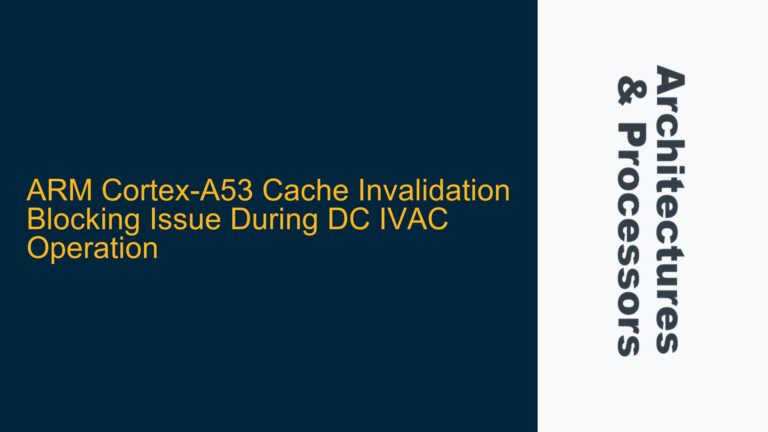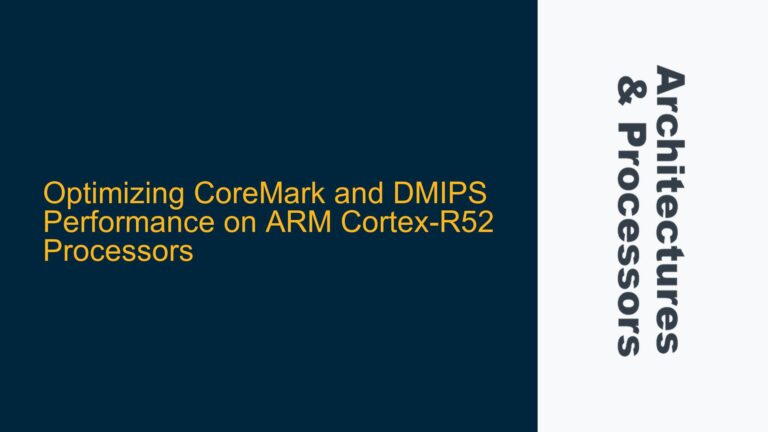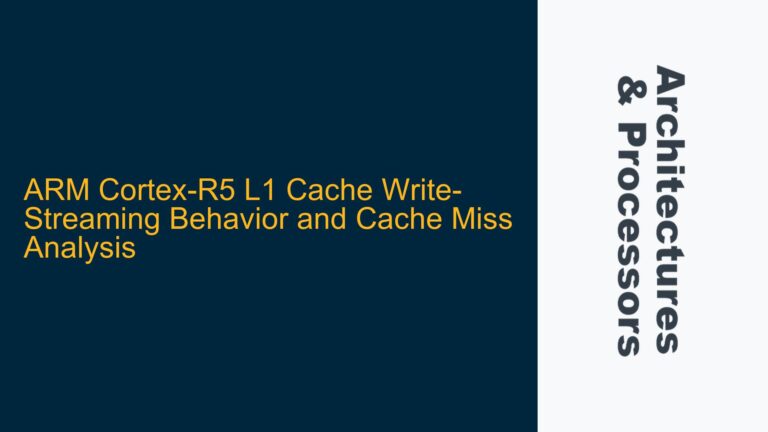ARM Cortex-R7 Write-Through Cache Behavior and Default Memory Map Configuration
ARM Cortex-R7 Write-Through Cache Behavior in Default Memory Map The ARM Cortex-R7 processor, a member of the ARMv7-R architecture family, is widely used in real-time and safety-critical applications due to its deterministic performance and high reliability. However, one of its architectural nuances is the lack of support for Write-Through (WT) caching. This limitation can lead…
